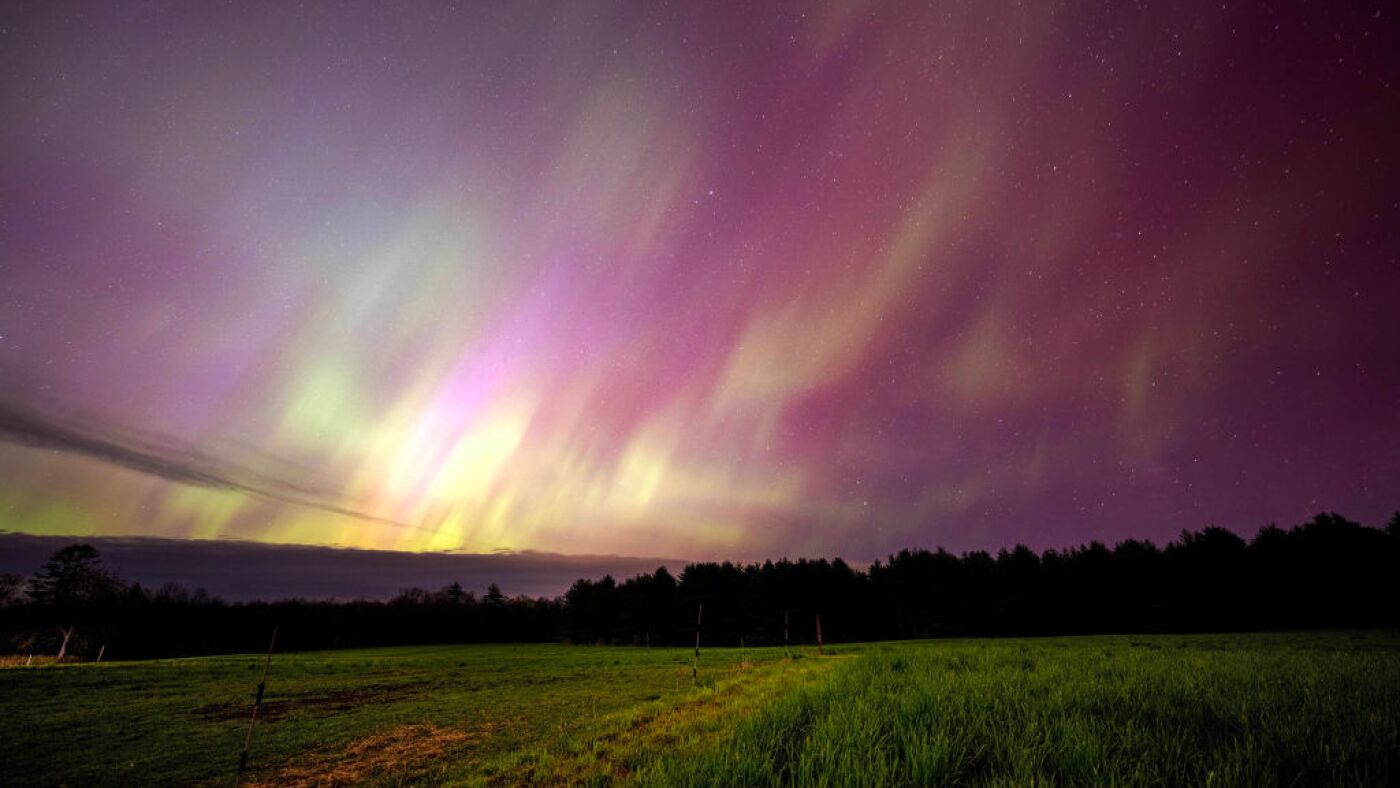

The stunning aurora borealis, or northern lights, lights up the night sky above a horse pasture in Mercer, Maine on May 10, 2024.
Michael Seamans/Getty Images
hide caption
toggle caption
Michael Seamans/Getty Images
This upcoming Valentine’s Day weekend could offer a delightful spectacle for some Americans, as the northern lights may grace the sky with their enchanting display. However, meteorologists from space weather research caution that the likelihood of this event is low.
The northern lights, referred to scientifically as aurora borealis, may be glimpsed in parts of North America starting Friday night, as forecasted by the National Oceanic and Atmospheric Administration’s Space Weather Prediction Center (NOAA).
“The aurora may become visible along the horizon in northern regions and the upper Midwest,” the agency shared on Friday
States like Michigan and Maine are anticipated to potentially experience auroral activity, according to a NOAA advisory.
Despite the excitement, it’s wise to manage expectations. An intensified solar wind from a coronal hole within the Sun’s atmosphere is approaching Earth, expected to trigger a minor geomagnetic storm lasting through Saturday.
This type of solar event, however, is less potent compared to coronal mass ejections, which unleash bursts of magnetic field and plasma. Rob Steenburgh, a space scientist at NOAA’s Space Weather Prediction Center, notes that visible auroras could be faint and possibly hard to detect, especially with a bright moon in the sky.
“The aurora’s reach in the Northern Hemisphere won’t extend too far south. Given that this is a more subdued storm, expectations of vivid displays are tempered due to the nearly full moon,” Steenburgh stated in an interview with NPR. “All of these conditions collectively make it unlikely to witness anything breathtaking at this moment.”
NASA indicates that the moon is 96% illuminated this Friday.
Nevertheless, do not be too despondent. Observing an aurora is akin to a game of luck, and stargazers should exercise patience, as NASA suggests.
As the sun’s current solar cycle nears its peak with significant solar storms, more chances to view the aurora are likely on the horizon.
To enhance your chances of witnessing this natural wonder, seek a dark location away from city lights, and direct your gaze northward. Utilizing a cellphone camera can also reveal colorful nuances that the naked eye may not detect.
“Even if the aurora isn’t visible to you directly, it’s always worth capturing a photo to see if your camera detects anything unusual,” advises Steenburgh.
Aurora enthusiasts can monitor the timing and location of potential auroras using specialized apps or by visiting NOAA’s website.









